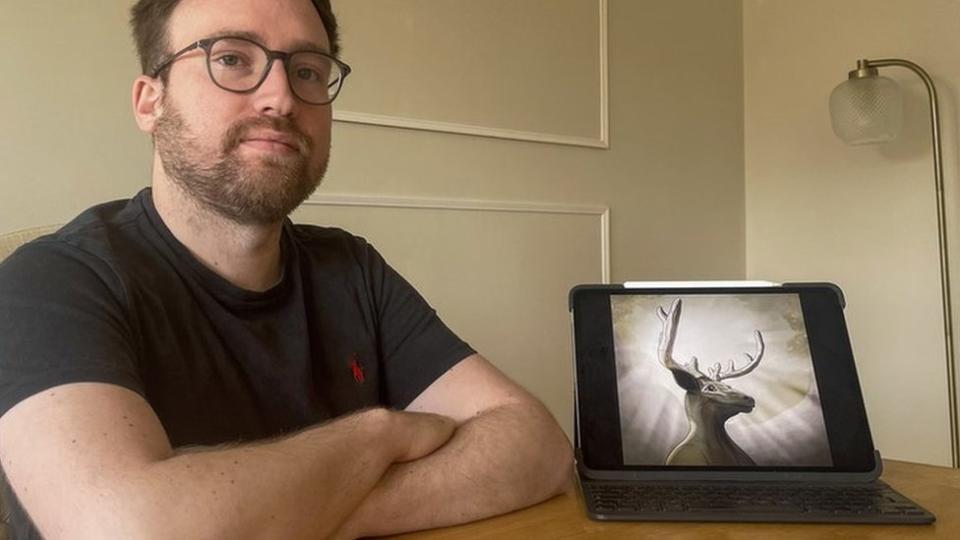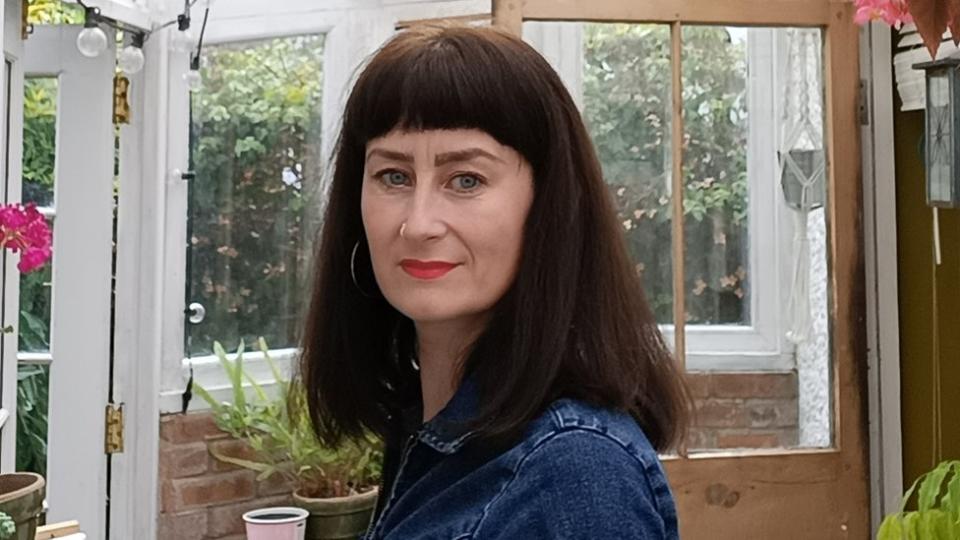Digital artist collects hundreds of thousands in NFT sales

A graphic designer has become one of Wales’ most commercially successful artists overnight after some of his digital works sold for almost £500,000.
Ashley Crossland from Cardigan, Ceredigion, designed 7,200 individual works which were bought as non-fungible tokens (NFT).
NFTs act as certificates of ownership and are designed to protect copyright.
“I never thought it would be so successful,” he said of the series based on man-made deer.
The series was sold for a cryptocurrency called Cardano and each design is unique.
“Having always enjoyed art and technology, I was drawn to the NFT space because it creates the possibility of digital fundraising, which was not as easy before.
“I started posting sketches of humanoid deer in communities online, and before I knew it the project had gathered a lot of interest and quickly became a huge success.”
Since the general sale, held over two days at the end of March, some of the individual chips have been resold for as much as the Cardano equivalent of £6,500.
NFTs have grown in popularity among digital artists and collectors, but have faced criticism due to the carbon footprint the technology requires.
What is a non-fungible token?
In economics, a fungible asset is something with units that can be easily exchanged – such as money.
With money, you can exchange a £10 note for two £5 notes and it will have the same value.
But if something is non-fungible, this is impossible – it means that it has unique properties so that it cannot be replaced by something else.
It could be a house, or a painting like the Mona Lisa, which is unique. You can take a photo of the painting or buy a print, but it will always be one original painting.
NFTs are “one-of-a-kind” assets in the digital world that can be bought and sold like any other property, but have no tangible form of their own.
The digital tokens can be considered as certificates of ownership for virtual or physical assets.
“Many artists have found new audiences”

Carol Breen, an artist and lecturer in graphic communication design at Cardiff Metropolitan University, said many in the art world are skeptical about the value of NFTs.
“Really all it is is a way of managing ownership in a digital space,” she said.
“I think it became popular because a lot of people thought there was a lot of potential for selling art in a way that was more democratic, so that it would become accessible to people who don’t have the platform of a gallery.
“You can assign a piece of digital certification to a piece of art that’s online. That’s in some ways very good for an artist because you can copyright that as well.
“I’m sure a lot of artists have found new audiences through NFTs and a lot of artists that I admire have played with NFTs, but then a lot of artists that I admire are pretty skeptical of them.
“Some have said that this is just another way that big conglomerates can lure people into these new kinds of art markets.
“In reality, they are quite closed to ordinary people or everyday artists”.

In addition to the artwork itself, Mr. Crossland and his collaborator, Jameel Sandham, expanded the series to include backstories and a mythical world that their characters inhabit.
Sandham, the project’s author, said it was exciting to be involved.
“I’ve always loved swords and sorcery and fantasy in general, so I took those ideas and turned them into a full fantasy story,” he said.
“Ash came up with a lot of the ideas and drew them, and I took those ideas and developed them in the literature.
“We have a great team and a massive community, and we get a lot of ideas and inspiration from them as well.”
Mr Crossland said they had ambitions to expand the idea further.
“We have thousands of people who love to collect digital art and read our stories,” he said.
“Building on our success, we will also create interactive online experiences around the art and stories.
“We want to create a fantasy world that millions can enjoy, and we want to do it with literature, art and interactive web.”


